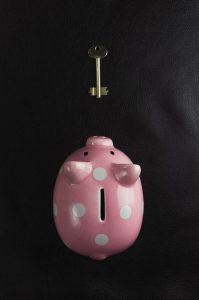Order blocks are important levels in the Forex market that traders use to identify potential reversal points. These blocks represent areas where significant buying or selling activity has occurred, and they can be identified using price action analysis. In this article, we will explore how to find order blocks in Forex trading.
What are Order Blocks?
Order blocks are areas on a price chart where institutional traders have placed significant buy or sell orders. These orders create a barrier that prevents price from moving through the level easily. When price does eventually break through an order block, it often leads to a strong move in the direction of the breakout.
Order blocks are often created at key support and resistance levels, but they can also be formed in areas of consolidation or after a significant move in price. Traders who are able to identify these areas can use them to enter trades with a high probability of success.
How to Find Order Blocks in Forex Trading?
Finding order blocks requires a good understanding of price action analysis. Price action analysis is the study of price movements on a chart, without the use of indicators or other technical analysis tools. Traders who use price action analysis rely on candlestick patterns, support and resistance levels, and chart patterns to identify potential trading opportunities.
To find order blocks, traders need to look for areas where price has stalled or consolidated. These areas may appear as small ranges on a price chart, or they may be larger, more significant levels that have held price for an extended period of time.
One way to identify order blocks is to look for areas where price has formed a double top or double bottom. These patterns occur when price reaches a high or low point, pulls back, and then returns to the same level before reversing. The level where price stalled on the second attempt is often an order block, as it represents an area where buyers or sellers were able to hold the market.
Another way to find order blocks is to look for areas where price has formed a strong, extended move in one direction, followed by a period of consolidation. These consolidation periods represent order blocks, as they show that traders are uncertain about the direction of the market.
Traders can also use Fibonacci retracement levels to identify potential order blocks. Fibonacci retracements are levels that represent a percentage of a price move. For example, if price moves from 100 to 110, a 50% retracement would be at 105. Traders can look for areas where price has retraced to a Fibonacci level and then stalled, as these levels may represent order blocks.
Finally, traders can use volume analysis to identify potential order blocks. High volume areas on a price chart often represent areas where institutional traders are active, and these areas may also be order blocks.
How to Trade Order Blocks?
Once traders have identified potential order blocks, they can use them to enter trades with a high probability of success. Traders can look for breakouts from order blocks, and use these breakouts as a signal to enter trades in the direction of the breakout.
Traders can also use order blocks as potential reversal points. If price approaches an order block and then stalls, traders can look for a reversal pattern, such as a double top or double bottom, to enter a trade in the opposite direction.
Conclusion
Order blocks are important levels in Forex trading that represent areas of significant buying or selling activity. Traders who are able to identify these levels can use them to enter trades with a high probability of success. To find order blocks, traders need to use price action analysis and look for areas where price has stalled or consolidated. Once identified, traders can use order blocks to enter trades in the direction of the breakout or as potential reversal points.






